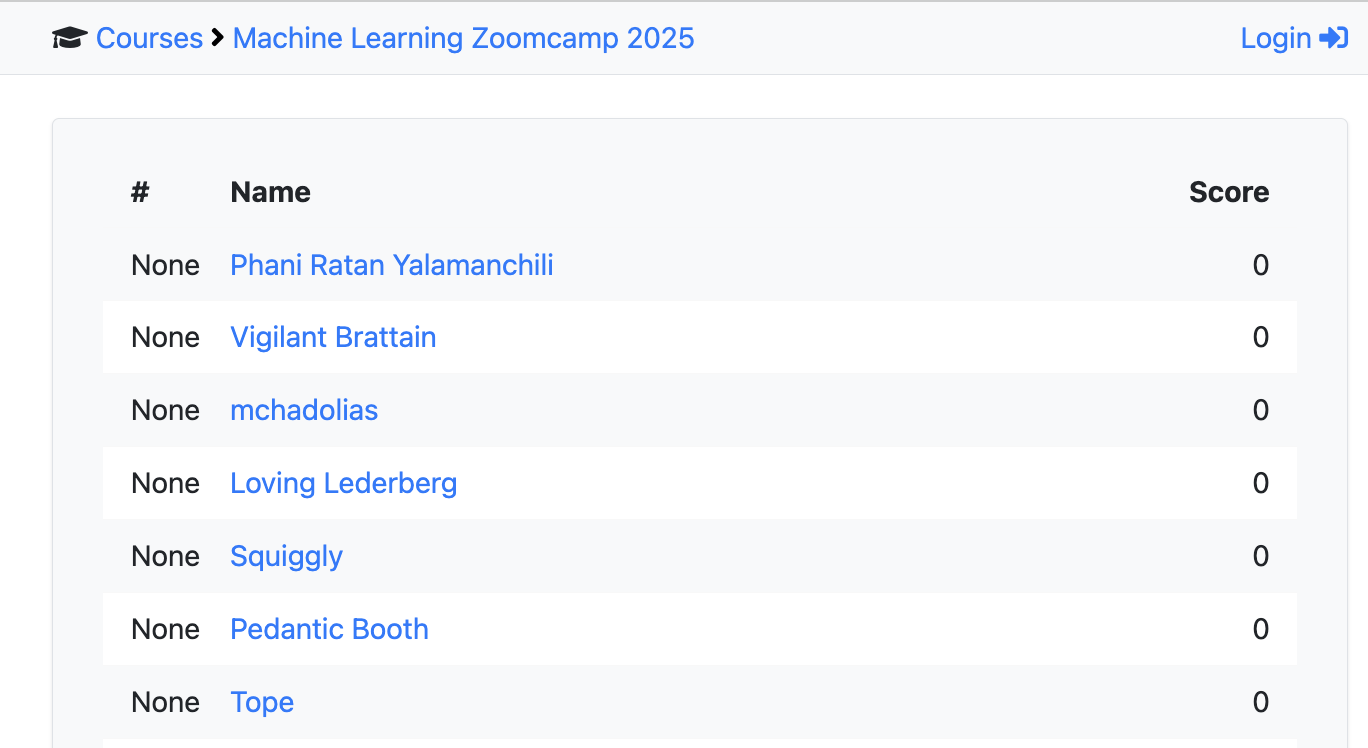Strategies for Success
Your success in the ML Zoomcamp depends on effective community participation and learning in public. The course is designed around collaboration and knowledge sharing, which means your engagement with others directly impacts your learning outcomes.
Most importantly, approach every project as a portfolio piece that should be GitHub-ready and deployable. For certification, you need working deployed models for 2 out of 3 projects (midterm project, final capstone, or second capstone). Previous graduates have used this strategy to secure positions at companies like Meta and obtain ML internships.
Learning in Public
Share your progress regularly on LinkedIn and Twitter using the #mlzoomcamp hashtag, and tag Alexey Grigorev and DataTalks.Club in your posts. The leaderboard system at courses.datatalks.club/ml-zoomcamp-2025/leaderboard awards points for homework completion, FAQ contributions, and resource sharing.

Consider writing blog posts about concepts you’ve mastered or challenges you’ve overcome. Examples include “Understanding Cross-Validation in Module 4” or “My Journey Deploying a FastAPI Model.” Posts about struggles like “3 Deployment Failures That Taught Me Docker Basics” are often more valuable than success stories. When you feel confident in a topic, answer questions in Slack—teaching others solidifies your own knowledge.
Study Strategy
Active learning is crucial for this hands-on course. Code along with lectures and experiment with variations to test your understanding. For instance, when working through the car price prediction in Module 2, try different features or preprocessing techniques to see how they affect model performance.
Homework is published under cohorts/2025/{module} in the course GitHub repository, with submission forms shared in Slack. While homework doesn’t count toward certification, completing assignments on time helps gauge your comprehension. Learn more in our Assignments and Scoring guide. After each deadline passes, the submission form closes automatically.
Publish all your code to public GitHub repositories with clear documentation and meaningful commit messages like feat: implement logistic regression for churn prediction rather than generic homework submission.
Portfolio Development
Every assignment should meet professional standards from day one. Write clear problem statements that explain business context: instead of “This is a classification project,” write “This project predicts customer churn for a telecommunications company to help identify at-risk customers for retention campaigns.”
Use meaningful repository names that describe the project’s purpose: telecom-churn-prediction-xgboost rather than homework3. Include comprehensive setup instructions with specific versions: “Python 3.11+, scikit-learn==1.3.0, pandas==2.0.3” and deployment instructions using tools like FastAPI, Docker, and cloud platforms.
Common Challenges
Module 4 (Model Evaluation) consistently emerges as the most challenging section. Topics like ROC curves, precision-recall trade-offs, and cross-validation can be abstract and mathematically intimidating. Allocate extra time for this module and join study groups for additional explanations.
Set up your development environment early using Anaconda (especially for Windows) and the UV package manager for virtual environments. Document your setup process with specific versions and commands. Use version control for all projects from the beginning.
Time management becomes critical as the course progresses. Each project follows a structured timeline: 2 weeks for development followed by 1 week for peer reviews (you must review 3 projects for each one you submit). Learn more about project requirements in Certification and Projects. The earliest you can receive your certificate is January 2025. Start homework assignments early in the week to avoid deadline pressure.